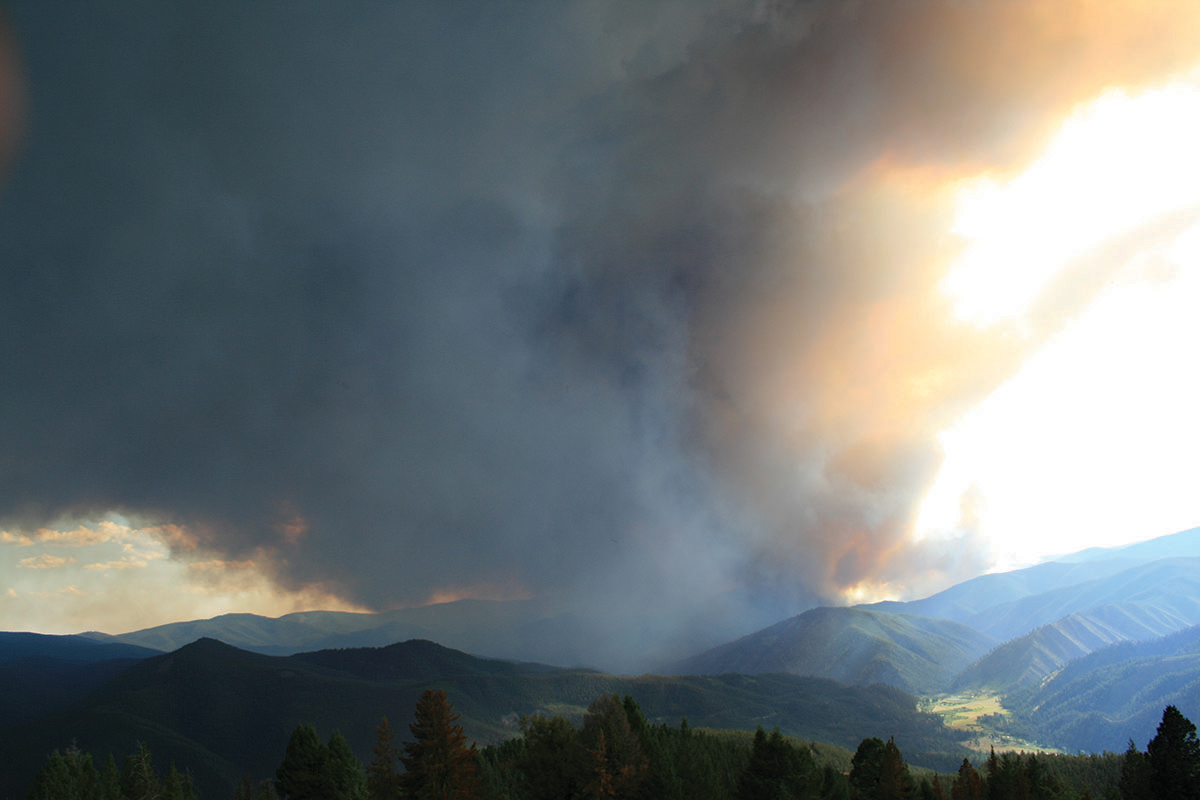This year will be the deadliest one for wildfires in California history. That dubious record follows closely on the heels of some of the costliest and most destructive fire years on record. The visible human toll of catastrophic wildfires, the massive costs to contain and mitigate them, and several significant environmental impacts have renewed interest among federal and state governments, communities, and environmentalists to find ways to address this risk.
Admittedly, there is sharp disagreement about the best way to reduce risks over the long-term. Do we merely need to “rake” forests regularly? Or must we address systemic risks worsened by climate change—a much more ambitious undertaking?
There could be more common ground when it comes to short-term measures that can help ensure next year’s fire season is not worse than this one. Many western forests are overgrown with brush, diseased trees, and other dry, fast-burning vegetation that causes fires to grow bigger, faster, and hotter. Unless those fuels are reduced, catastrophic wildfires will continue.
The fact that the Forest Service has had to spend a large and growing share of its budget fighting fires has left the agency with a backlog of more than 80 million acres that requires forest restoration work to address fire risk. That backlog would take 20 years to clear at the agency’s current pace. Tackling it won’t be easy because the spindly vegetation that poses the greatest fire risk has little commercial value, meaning that any thinning of it must be done at a loss.
National forests have a backlog of more than 80 million acres of forest restoration work. But the vegetation that poses the greatest fire risk often has little commercial value.
Historically, the Forest Service has overcome this challenge by allowing timber companies to harvest larger, more valuable trees in exchange for thinning lower-value vegetation. That practice, however, triggers many regulatory burdens. It also increases litigation risk because environmentalists often place a high value on older trees.
Fortunately, new markets are developing that stand to increase beneficial forest restoration work without relying on harvesting large, healthy trees. This fall, for instance, Blue Forest Conservation and World Resources Institute completed fundraising for the first Forest Resilience Bond, which will pay for fuel reduction in the Tahoe National Forest. (See “Fighting Fire With Finance” from the Summer 2018 issue for more on the concept.) The beneficiaries of reduced fire risk—including the State of California and a local water district—pay back the bond’s investors based on the project’s success at reducing fire risk. Thus, lower fire risk provides the financial incentive for projects financed this way, allowing forest restoration to focus on fire-risk reduction and be less dependent on timber revenue.
In addition, there are also opportunities to address fire risk by creating markets for products made from small trees. Earlier this year, a California commission recommended the state explore ways to generate electricity and produce products from the wood removed from forests for fuel reduction purposes.
Take, for example, the effort of forest ecologist and PERC enviropreneur Dave Wager to maintain old-growth forests in western Montana. Tall, centuries-old ponderosa pines are the kings of the forest there, but most were harvested in the 19th century. The ones that survived are in areas with rough terrain where timber harvesting is a challenge.
Today, the towering ponderosas face a different threat. Smaller and denser Douglas-fir trees now dominate the forest’s understory. These Douglas firs not only compete with ponderosas for resources, but they also increase the risk of crown fires that could kill the older trees.
Like much forest restoration work, removing Douglas firs from old-growth forests has long been too expensive to be commercially viable. “Remnant old-growth stands exist today, in part, because they were too inaccessible or too steep to be logged economically,” Wager explained to PERC fellow Shawn Regan in a 2012 interview. “Ironically,” he continued, “the same cost challenges that explain their existence also serve as an impediment to their conservation today.”
Wager’s solution: handmade, tree ring pens. Wager harvests low-valued Douglas-fir trees from old-growth stands then crafts the wood into luxury pens and other products that emphasize the trees’ rings and history. The pen that sits on my desk, a birthday present from my wife, notes the rings corresponding to the tree’s birth in the late 19th century and my own birthday almost 100 years later. Not only is it neat to hold so much history in your hand, but a purchase helps in a small way to promote more fire-resilient forests. Producing a product like tree ring pens provides an economic incentive for forest restoration work that was previously unprofitable.
That’s an important model for the catastrophic wildfire problem now faced throughout the West. If environmentalists wish to avoid seeing large, older trees harvested to finance fuel reduction projects, we should find more opportunities to align market incentives with positive environmental outcomes.
Market innovations are already helping address the risk of catastrophic wildfire throughout the West. But solving such a large problem, even in the short term, will require better incentives and even more markets.




